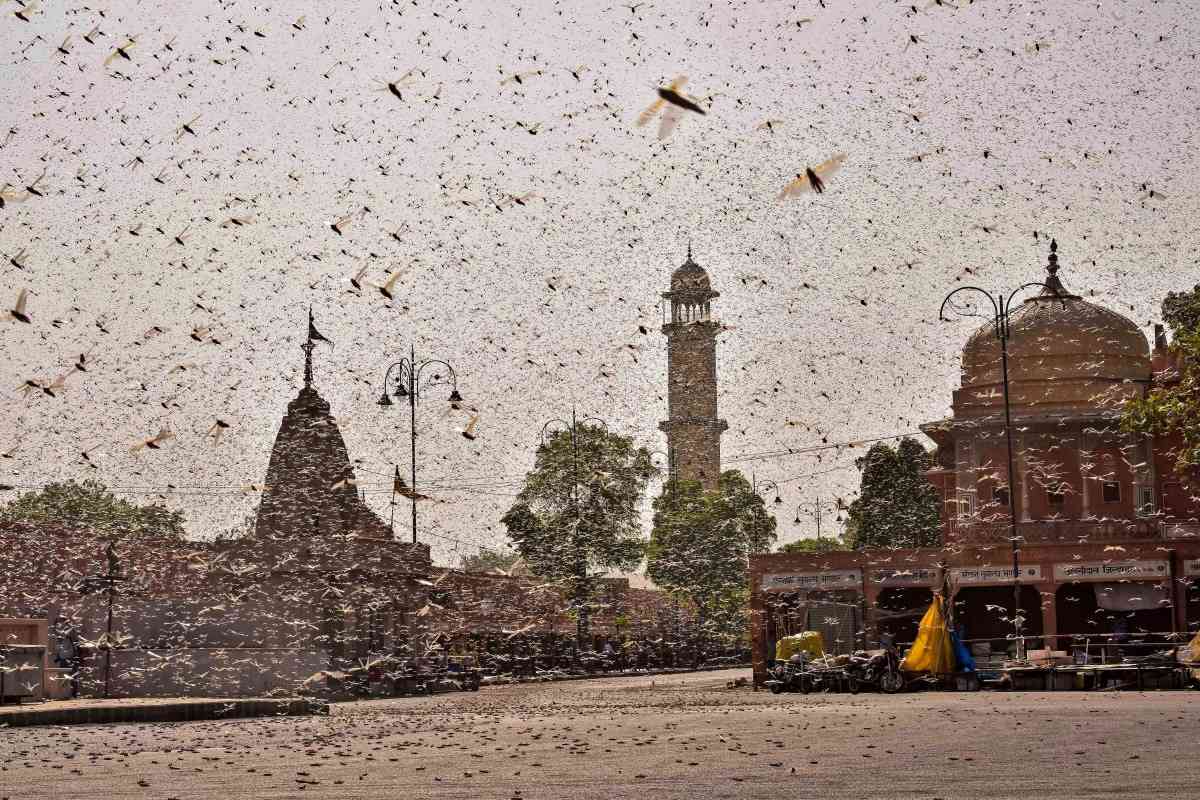
Swarms of the desert locust, which invaded India via Pakistan in April, have made their way to at least five states, leaving a trail of destruction in their wake. Desert locust move in large groups, called swarms, and can eat crops up to their own weight every day. When millions of locusts descend on a crop, they destroy everything.
The desert locust is considered the most destructive migratory pest in the world and a single swarm covering one square kilometre can contain up to 80 million locusts. As per eyewitnesses, the swarm which entered India from Pakistan was about two to three kilometres long.
In December 2019, when the parts of Gujarat were invaded by locust, they had destroyed crops spread over 25,000 hectares of land. This time, the attack is more widespread.
Locust swarms entered India from Pakistan where they flew in from Iran last year. From Rajasthan, locusts entered Madhya Pradesh via Neemuch and have advanced to Ujjain and Dewas. The locust swarms have also made their way to Gujarat, Uttar Pradesh and Maharashtra. Due to the proximity with Pakistan as well as rest of the affected areas, Punjab has also put its farmers on alert.
Here’s a look at how states are battling with Locust Attack
Rajasthan
The desert locust attack has wiped out crops spread over 5,00,000 hectares in Rajasthan. The state has been battling with the locust menace for over three months now.
In Western Rajasthan’s Sri Ganganagar, Bikaner and Barmer districts, large groups of pink swarming locusts destroyed lush green fields laden with Rabi crops this year. Farmers in Jodhpur, Jhalawar, Karauli and Bundi have reported large infestations.
Several officials have been involved in clearing the locusts across the state. However, the problem seems far from over. Ministry of Agriculture officials are now spraying chemicals to neutralise the large swarm of locusts before they cause more destruction.
Farmers in various parts of the state have been using different tactics, including desperate measures — beating steel utensils during late afternoons and evenings, playing loud music at night, creating wood-fire and running the tractor inside their fields — to scare away the locusts.
However, none of the methods helped reduce the effect of menacing locusts on crops.
Jaskaran Singh, a farmer who owns 25 bighas of land in Anupgarh, told India Today TV earlier this year that he has been devastated due to the attack by the swarming locusts on his crops of wheat and peas.
“Had taken a loan of Rs 9,00,000 in my mother Amarjeet Kaur’s name, but now that the crop has been destroyed. I have no idea how the debt will be paid off,” he said.
Jaskaran, whose eyed teared up while speaking, requested the government to compensate him for the loss.